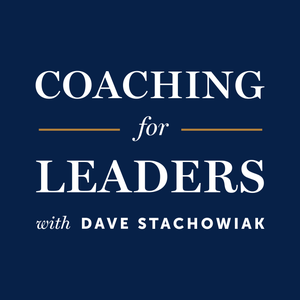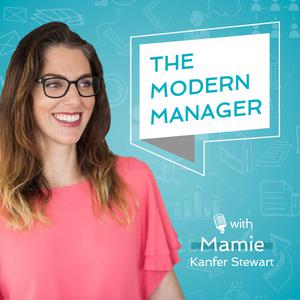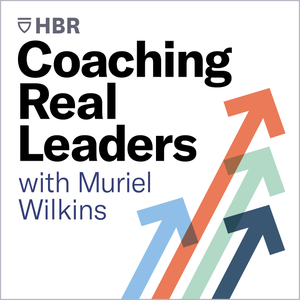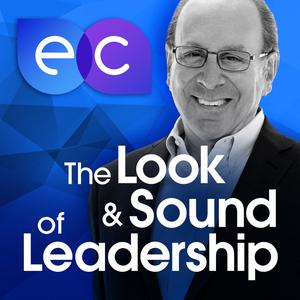
Coaching for Leaders
Dave Stachowiak
Discover leadership wisdom through insightful conversations
- 39 minutes 49 seconds677: How Leaders Can Better Support High-Achieving Women, with Sohee Jun
Sohee Jun
Sohee Jun is a leadership coach for female executives, leaders, founders, and entrepreneurs. She is also a TEDx speaker, Forbes Coaches Council member, keynote speaker, leadership development expert, and author. With over twenty years in the corporate world, she has worked with Fortune 500 companies, including those in the entertainment, production, and media sectors such as Netflix, Fox, and Disney.
In 2020, Sohee released her first book, Mommytracked: How to Take Authentic Risks and Find Success on Your Terms, with the goal of helping ambitious women tap into their inner core throughout the different phases of their lives. She’s now the author of a second book, The Inner Game: Secrets of High-Achieving Women for Navigating Work, Life, and Mindset*.
In a world where still too few women are represented in senior leadership roles, many of us want to do whatever we can to support high-achieving women. In this conversation, Sohee and I explore what her research and experience indicates that leaders can do to better support women in their careers.
Key Points
- Leaders can support both women and men by framing the larger “why” or North Star. Providing context helps a point of focus to emerge.
- Do it afraid. Provide support to work through fearful situations with success.
- When supporting women in building confidence, help them recognize what they’ve already achieved.
- Normalize the discussion about financial literacy. Opening the door to dialogue around salary negotiation helps equalize the salary gap.
- One question can set the tone for better work and life integration. Leaders can proactively ask about boundaries.
Resources Mentioned
- The Inner Game: Secrets of High-Achieving Women for Navigating Work, Life, and Mindset* by Sohee Jun
Interview Notes
Download my interview notes in PDF format (free membership required).
Related Episodes
- How to Prioritize, with Christy Wright (episode 545)
- How to Protect Your Confidence, with Nate Zinsser (episode 573)
- The Path Towards Your Next Promotion, with Adam Bryant (episode 653)
Discover More
Activate your free membership for full access to the entire library of interviews since 2011, searchable by topic. To accelerate your learning, uncover more inside Coaching for Leaders Plus.
22 April 2024, 3:00 am - 39 minutes 11 seconds676: How to Change People’s Minds, with Michael McQueen
Michael McQueen: Mindstuck
Michael McQueen has spent the past two decades helping organizations and leaders win the battle for relevance. He specializes in helping clients navigate uncertainty and stay one step ahead of change.
Michael is a bestselling author of nine books and a familiar face on the international conference circuit, having shared the stage with the likes of Bill Gates, Dr. John C. Maxwell, and Apple co-founder Steve Wozniak. Having formerly been named Australia’s Keynote Speaker of the Year, he has been inducted into the Professional Speakers Hall of Fame. He is the author of Mindstuck: Mastering the Art of Changing Minds*.
There’s a lot of evidence that our minds would rather feel right than be right. How then, do you influence someone when they are really convinced of their position? In this conversation, Michael and I discuss the initial steps that help in changing people’s minds.
Key Points
- Our tendency is to convince to the inquiring mind, but we’ll do better if we speak to the instinctive mind first.
- Help others lessen loss and maintain dignity by preserving titles, language, and symbols in things that are new.
- Instead of trying making an argument, ask a question that allows the other person to listen to themselves.
- Ask questions that clarify points of resistance or misunderstanding.
- Speak like you’re right, listen like you’re wrong.
Resources Mentioned
- Mindstuck: Mastering the Art of Changing Minds* by Michael McQueen
Interview Notes
Download my interview notes in PDF format (free membership required).
Related Episodes
- The Way to Influence Executives, with Nancy Duarte (episode 450)
- Four Habits That Derail Listening, with Oscar Trimboli (episode 500)
- Three Practices for Thriving in Negotiations, with William Ury (episode 669)
Discover More
Activate your free membership for full access to the entire library of interviews since 2011, searchable by topic. To accelerate your learning, uncover more inside Coaching for Leaders Plus.
15 April 2024, 3:00 am - 30 minutes 52 seconds675: How to Be a Better Ally, with Lauren Wesley Wilson
Lauren Wesley Wilson: What Do You Need?
Lauren Wesley Wilson is a leading thought leader on media relations, diversity and inclusion, and crisis communications. At 25, she became the founder and CEO of ColorComm Corporation. Prior to that, Lauren worked as a communications strategist at a prestigious crisis communications firm in Washington, D.C.
Lauren has been featured in The Washington Post, Forbes, and People, as well as on MSNBC and CNBC, and more. She has been recognized by PR Week’s 50 Most Powerful in PR, Ad Age’s Women to Watch, and New York Women in Communications. She is the author of What Do You Need?: How Women of Color Can Take Ownership of Their Careers to Accelerate Their Path to Success*.
Many of us wish to be good allies in the workplace, especially to those who are underrepresented. Yet, what we assume that means isn’t always what’s most wanted or needed. In this conversation, Lauren and I discuss what leaders and peers can do to be better allies.
Key Points
- Instead of asking “How can I help?” consider, “What do you need?” That’s more likely to generate specific actions.
- Women of color feel like they are putting in tons of work into relationships with the majority culture, but it often feels unreciprocated.
- White folks think of allyship as speaking out against discrimination. Women of color say it’s way more critical to advocate for new opportunities.
- Tie allyship to economic goals: conference attendance, nominations for recognition, inclusion on high-profile committees, and position/promotion considerations.
- Make invitations to people of color to be at the table. This contributes more substantially than proclamations of support.
- When you make a mistake, apologize, own it, and move on. Don’t tell a story to explain yourself.
Resources Mentioned
- What Do You Need?: How Women of Color Can Take Ownership of Their Careers to Accelerate Their Path to Success* by Lauren Wesley Wilson
Interview Notes
Download my interview notes in PDF format (free membership required).
Related Episodes
- The Way Managers Can be Champions for Justice, with Minda Harts (episode 552)
- End Imposter Syndrome in Your Organization, with Jodi-Ann Burey (episode 556)
- How to Respond Better When Challenged, with Dolly Chugh (episode 615)
Discover More
Activate your free membership for full access to the entire library of interviews since 2011, searchable by topic. To accelerate your learning, uncover more inside Coaching for Leaders Plus.
8 April 2024, 3:00 am - 28 minutes 4 seconds674: Principles for Using AI at Work, with Ethan Mollick
Ethan Mollick: Co-Intelligence
Ethan Mollick is a professor of management at Wharton, specializing in entrepreneurship and innovation. His research has been featured in various publications, including Forbes, The New York Times, and The Wall Street Journal.
Through his writing, speaking, and teaching, Ethan has become one of the most prominent and provocative explainers of AI, focusing on the practical aspects of how these new tools for thought can transform our world. He’s the author of the popular One Useful Thing Substack and also the author of the book, Co-Intelligence: Living and Working with AI*.
Whether you’ve used it or not, you’ve heard that AI will transform how we work. Given how quickly the technology is changing, how do you start and, if you’ve started already, what’s the way to use it well? In this conversation, Ethan and I discuss the principles for using AI, even as the technology changes.
Key Points
- GPT-4 is already passing the bar examination in the 90th percentile, acing AP exams, and even passing the Certified Sommelier Examination.
- Always invite AI to the table. It’s may be helpful, frustrating, or useless — but understanding how it works will help you appreciate how it may help or threaten you.
- Being the “human in the loop” will help you catch where AI isn’t accurate or helpful. Zeroing in on areas where you are already an expert will help you appreciate where AI is useful and where its limitation emerge.
- Treat AI like a person, but tell it what kind of person it is. It’s helpful to think of AI like an alien person rather than a machine.
- Assume this is the worst AI you will ever use. Embracing that reality will help you stay open to possibilities on how you use AI do your work better.
Resources Mentioned
- Co-Intelligence: Living and Working with AI by Ethan Mollick
Interview Notes
Download my interview notes in PDF format (free membership required).
Related Episodes
- How to Build an Invincible Company, with Alex Osterwalder (episode 470)
- Doing Better Than Zero Sum-Thinking, with Renée Mauborgne (episode 641)
- How to Begin Leading Through Continuous Change, with David Rogers (episode 649)
Discover More
Activate your free membership for full access to the entire library of interviews since 2011, searchable by topic. To accelerate your learning, uncover more inside Coaching for Leaders Plus.
1 April 2024, 3:00 am - 39 minutes 25 seconds673: The Way to Prevent Being Duped, with Mike Caulfield
Mike Caulfield: Verified
Mike Caulfield is a research scientist at the University of Washington’s Center for an Informed Public, where he studies the spread of online rumors and misinformation. He has taught thousands of teachers and students how to verify claims and sources through his workshops. His SIFT methodology is taught by hundreds of research libraries across North America, and a shorter version of SIFT instruction, developed with Google, has been taught in public libraries across the world.
His work on Web Literacy for Student Fact-Checkers, won the Merlot Award for best open learning resource in the ICT category. His work has been covered by The New York Times, the Chronicle of Higher Education, NPR, The Wall Street Journal, USA Today, and the MIT Technology Review. He is the author with Sam Wineburg of Verified: How to Think Straight, Get Duped Less, and Make Better Decisions about What to Believe Online*.
We’ve all seen something online that we thought was true, but turned out was a hoax. Annoying, but no big deal if it’s just an internet meme from a friend or family member. But what if what you find online isn’t at all what you thought and you make decisions or take action on it that affects your professional credibility? In this conversation, Mike and I discuss how to guard yourself from being duped.
Key Points
- Rather than asking, “Is this true?” the more useful question is, “Do I know what I’m looking at here?”
- The cheap signals many of us were trained to watch for (working links, attractive design, about pages, proper domains) are easy to replicate and no longer correlate to credibility.
- Phrase questions to search engines in neutral ways for less biased results. Instead of “Are soda taxes a good idea?” ask “Do soda taxes work?”
- While Wikipedia still has bias, it’s a far more credible source that many of us were taught — and a valuable source for a broad perspective of a topic or organization.
- Intelligent people often read vertically, to their detriment. The best fact-checkers read laterally by using the rest of the web to read the web.
- Watch for phrases like “sponsored content,” “brand partner,” “presented with,” “in partnership with,” “brought to you by,” “in association with,” or “hosted by.” These phrases signal advertisements.
Resources Mentioned
- Verified: How to Think Straight, Get Duped Less, and Make Better Decisions about What to Believe Online* by Mike Caulfield and Sam Wineburg
Interview Notes
Download my interview notes in PDF format (free membership required).
Related Episodes
- The Way to Make Better Decisions, with Annie Duke (episode 499)
- Get People Reading What You’re Sending, with Todd Rogers (episode 666)
- How to Enhance Your Credibility (audio course)
Discover More
Activate your free membership for full access to the entire library of interviews since 2011, searchable by topic. To accelerate your learning, uncover more inside Coaching for Leaders Plus.
25 March 2024, 3:00 am - 39 minutes 12 seconds672: Set the Tone for Speaking Up, with Mike Massimino
Mike Massimino: Moonshot
Mike Massimino is a former NASA astronaut and a professor of mechanical engineering at Columbia University. He’s also the senior advisor for space programs at the Intrepid Sea, Air & Space Museum. He was selected as an astronaut by NASA in 1996, and is the veteran of two space flights, the fourth and fifth Hubble Space Telescope servicing missions in 2002 and 2009.
Mike has made numerous television appearances, including a six-time recurring role as himself on the CBS hit comedy The Big Bang Theory. He has hosted Science Channel’s The Planets and its special Great American Eclipse. Mike is the author of the New York Times bestselling book Spaceman and now his newest book Moonshot: A NASA Astronaut’s Guide to Achieving the Impossible.
Almost every leader and organization invites people to speak up and make their voice head. As we all know, that doesn’t means it happens in practice. In this conversation, Mike and I discuss how leaders can set the tone for what’s said, and what’s not.
Key Points
- You’ll know when it’s time to speak up. Your cue is that hair-raising, sinking feeling in the moment of a high-stakes situation or the feeling of confusion in a less intense situation.
- Outsiders and rookies are often the most observant people in the team since they are hyper-aware of doing something new and noticing details a veteran may miss.
- It’s important to speak up when you see something wrong, but equally important is to speak up when you do something wrong. The only unforgivable sin at NASA is trying to cover something up.
- Your title or position may influence how others in the organization speak up (or don’t). When someone speaks up, saying “thank you” in the moment sets the tone for future dialogue.
- Reward speaking up with incentives. The Hubble Space Telescope servicing manager created challenges for people to speak up to reduce spacewalk time.
Resources Mentioned
- Moonshot: A NASA Astronaut’s Guide to Achieving the Impossible by Mike Massimino
Interview Notes
Download my interview notes in PDF format (free membership required).
Related Episodes
- How to Start Managing Up, with Tom Henschel (episode 433)
- How to Speak Up, with Connson Locke (episode 546)
- How to Help People Speak Truth to Power, with Megan Reitz (episode 597)
Discover More
Activate your free membership for full access to the entire library of interviews since 2011, searchable by topic. To accelerate your learning, uncover more inside Coaching for Leaders Plus.
18 March 2024, 3:00 am - 33 minutes 25 seconds671: How to Recognize Remarkable People, with Guy Kawasaki
Guy Kawasaki: Think Remarkable
Guy Kawasaki is the chief evangelist of Canva and the creator of Guy Kawasaki’s Remarkable People podcast. He is an executive fellow of the Haas School of Business (UC Berkeley), and adjunct professor at the University of New South Wales.
He was the chief evangelist of Apple and a trustee of the Wikimedia Foundation. He has written Wise Guy, The Art of the Start 2.0, The Art of Social Media, Enchantment, and eleven other books. He’s now the author of Think Remarkable: 9 Paths to Transform Your Life and Make a Difference.
We all want to be surrounded by remarkable people in our work. A key piece to building relationships with them is recognizing when they come across our radar screens. In this conversation, Guy and I explore some of the key indicators for recognizing remarkable people.
Key Points
- Remarkable people reflect back to childhood. They recognize the experiences and people that contributed to their success.
- Remarkable people don’t find their passions, they develop them. They know that it’s rarely love at first sight.
- Remarkable people aren’t trying to save the world. They start with small and simple questions that scratch an itch.
- Remarkable people make themselves indispensable. The the do work nobody else wants to do which separates them from the pack.
- Remarkable people interact with a diverse group of people. They want to hear different perspectives and recognize the diversity makes them better.
- Remarkable people have overcome hardships. They’ve challenged themselves to find paths forward through the toughest situations.
Resources Mentioned
Interview Notes
Download my interview notes in PDF format (free membership required).
Related Episodes
- How to Lead and Retain High Performers, with Ruth Gotian (episode 567)
- How to Strengthen Your Network, with Marissa King (episode 525)
- Help Your Team Embrace Growth Mindset, with Eduardo Briceño (episode 644)
Discover More
Activate your free membership for full access to the entire library of interviews since 2011, searchable by topic. To accelerate your learning, uncover more inside Coaching for Leaders Plus.
11 March 2024, 3:00 am - 40 minutes 15 seconds670: How to Connect with People Better, with Charles Duhigg
Charles Duhigg: Supercommunicators
Charles Duhigg is a Pulitzer Prize–winning investigative journalist and the author of The Power of Habit and Smarter Faster Better. A graduate of Harvard Business School and Yale College, he is a winner of the National Academies of Sciences, National Journalism, and George Polk awards.
He writes for The New Yorker and other publications, and is host emeritus of the Slate podcast How To! He’s the author of Supercommunicators: How to Unlock the Secret Language of Connection*.
We all know that we can’t lead if we don’t connect. The best leaders not do this well, but they do it consistently with all kinds of people. In this conversation, Charles and I discuss what we can learn from the best communicators to get better ourselves.
Key Points
- Neural entrainment is when we click with someone and can finish each other’s sentences (and even our biological responses align). Supercommunicators trigger this consistently across many kinds of relationships.
- Supercommunicators aren’t always loudest or leading the conversation, but they ask more questions and adapt better in the moment.
- Make emotional replies easier for others. Instead of, “Do you have any hobbies?” ask, “If you could learn anything, what would it be?”
- Reciprocation of emotion is key for people to connect well. When another party is sharing something joyful, that’s an opportunity to share yourself.
- When something is more contentious, loop for understanding by (1) asking a deeper question, (2) repeating back in your own words, and (3) asking if you got it right.
Resources Mentioned
- Supercommunicators: How to Unlock the Secret Language of Connection* by Charles Duhigg
Interview Notes
Download my interview notes in PDF format (free membership required).
Related Episodes
- Where You May Be Provoking Anxiety, with Erica Dhawan (episode 528)
- The Way to Get People Talking, with Andrew Warner (episode 560)
- How to Help Others Be Seen and Heard, with Scott Shigeoka (episode 654)
Discover More
Activate your free membership for full access to the entire library of interviews since 2011, searchable by topic. To accelerate your learning, uncover more inside Coaching for Leaders Plus.
4 March 2024, 4:00 am - 39 minutes 29 seconds669: Three Practices for Thriving in Negotiations, with William Ury
William Ury: Possible
William Ury is one of the world’s best-known experts on negotiation, and the co-author of Getting to Yes, the all-time bestselling book on negotiation with more than 15 million copies sold. He is co-founder of Harvard’s Program on Negotiation and has served as a negotiator in many of the toughest disputes of our times. He has taught negotiation to tens of thousands, and consulted for dozens of Fortune 500 companies, the White House, the State Department, and the Pentagon.
William has served as a negotiation adviser and mediator in conflicts ranging from Kentucky wildcat coal mine strikes to wars in the Middle East, Colombia, Korea, and Ukraine. He is an internationally sought-after speaker and has two popular TEDx talks with millions of views. He’s also the author of Possible: How We Survive (and Thrive) in an Age of Conflict*.
We often assume that conflict is bad, but William says we actually need more conflict, not less. In this conversation, we explore three practices that will help you thrive in the toughest negotiations. And no surprise — the biggest obstacle in getting what we want is almost always ourselves.
Key Points
- We need more conflict, not less. The best decisions often emerge from a negotiation.
- The biggest obstacle in negotiation is ourselves. Pauses and silence prevent us from reacting without thinking.
- Zoom in to examine the interests that are behind your stated positions. This often elicits meaningful steps.
- Rarely are conflicts about surface issues. Uncovering your deeper motivations will help you approach negotiation more productively.
- Negotiation doesn’t only happen at one table. Zoom out to at least two other tables: the internal negotiations of both sides.
Resources Mentioned
- Possible: How We Survive (and Thrive) in an Age of Conflict* by William Ury
Interview Notes
Download my interview notes in PDF format (free membership required).
Related Episodes
- Negotiate As If Your Life Depended On It, with Chris Voss (episode 262)
- How to Find Confidence in Conflict, with Kwame Christian (episode 380)
- How to Negotiate When Others Have Power, with Kwame Christian (episode 416)
Discover More
Activate your free membership for full access to the entire library of interviews since 2011, searchable by topic. To accelerate your learning, uncover more inside Coaching for Leaders Plus.
26 February 2024, 4:00 am - 39 minutes 35 seconds668: How to Begin with an Executive Coach, with Scott Osman and Jacquelyn Lane
Scott Osman and Jacquelyn Lane: Becoming Coachable
Scott Osman is the founder and CEO of the 100 Coaches Agency and co-designer with Jacquelyn Lane of their proprietary curation process and the company’s relationship-first philosophy. In his role as CEO, he establishes the vision for the company, leads partnerships and business development, and serves as a leading light of the 100 Coaches Community, which he cofounded with Marshall Goldsmith in 2016.
Jacquelyn Lane is the president of the 100 Coaches Agency. She has been with the agency since its founding and is a critical pillar of the 100 Coaches Community. Jacquelyn comes to the world of executive coaching through her previous roles in the energy industry and lifelong commitment to improving the lives of all people by elevating the quality of leadership. Along with Scott and Marshall Goldsmith, she is co-author of Becoming Coachable: Unleashing the Power of Executive Coaching to Transform Your Leadership and Life*.
Perhaps you’ve been considering working with a coach, but how do you start? In this episode Scott, Jacquelyn, and I discuss when to consider coaching, how it might help, and the best way to begin. Plus, we explore the most helpful mindsets to help you get the most out of coaching.
Key Points
- Leaders who create value at moments of inflection really need a coach.
- Two common reasons leaders seek coaching: (1) getting support with an issue that’s tough to navigate and (2) accelerating their leadership growth.
- Interview three coach candidates and utilize those interactions to discover different ways that you may reach your goals.
- Coaching fees should reflect the value the organization receives from the coaching. Most high-end coaching is funded by the organization.
- Slow is smooth and smooth is fast. To speed up, a coach may invite you to slow down in the immediate short-term.
Resources Mentioned
- Becoming Coachable: Unleashing the Power of Executive Coaching to Transform Your Leadership and Life* by Scott Osman and Jacquelyn Lane
Interview Notes
Download my interview notes in PDF format (free membership required).
Related Episodes
- How to Win the Long Game When the Short-Term Seems Bleak, with Dorie Clark (episode 550)
- How to Help People Engage in Growth, with Whitney Johnson (episode 576)
- The Art of Mentoring Well, with Robert Lefkowitz (episode 599)
Discover More
Activate your free membership for full access to the entire library of interviews since 2011, searchable by topic. To accelerate your learning, uncover more inside Coaching for Leaders Plus.
19 February 2024, 4:00 am - 34 minutes 50 seconds667: The Way to Handle Oblivious Leadership, with Robert SuttonRobert Sutton: The Friction Project Robert Sutton is an organizational psychologist and professor of Management Science and Engineering in the Stanford Engineering School. He has given keynote speeches to more than 200 groups in 20 countries and served on numerous scholarly editorial boards. Bob's work has been featured in The New York Times, BusinessWeek, The Atlantic, Financial Times, The Wall Street Journal, Vanity Fair, and The Washington Post. He is a frequent guest on various television and radio programs, and has written seven books and two edited volumes, including the bestsellers The No A-hole Rule, Good Boss, Bad Boss, and Scaling Up Excellence. He is the co-author with Huggy Rao of The Friction Project: How Smart Leaders Make the Right Things Easier and the Wrong Things Harder*. We’ve all worked with someone who seemed just a bit oblivious. None of us want to be that kind of leader. In this conversation, Bob and I discuss key strategies for how to stop it and also prevent it. Key Points Privilege spares you hassles, but has a cost. You risk cluelessness about troubles in the organization. Power and prestige can cause leaders to focus more on themselves, less on others, and act like the rules don’t apply to them. An antidote to oblivious leadership is less transmission and more reception. Measure two behaviors: (1) how much the leader talks vs. others in interactions and (2) the ratio of questions the leader asks vs. statements the leader makes. Either manage by walking out of the room or get into the details with ride alongs, direct help, and doing the work with folks. Be cautious about “managing by walking around” getting ritualistic. Hierarchy is inevitable and useful. The most effective leaders flex it by knowing when to collaborate and when to direct. Resources Mentioned The Friction Project: How Smart Leaders Make the Right Things Easier and the Wrong Things Harder* by Robert Sutton and Huggy Rao Interview Notes Download my interview notes in PDF format (free membership required). Related Episodes Use Power for Good and Not Evil, with Dacher Keltner (episode 254) How to Ask Better Questions, with David Marquet (episode 454) How to Help People Speak Truth to Power, with Megan Reitz (episode 597) How to Prevent a Team From Repeating Mistakes, with Robert “Cujo” Teschner (episode 660) Discover More Activate your free membership for full access to the entire library of interviews since 2011, searchable by topic. To accelerate your learning, uncover more inside Coaching for Leaders Plus.12 February 2024, 4:00 am
- More Episodes? Get the App
Your feedback is valuable to us. Should you encounter any bugs, glitches, lack of functionality or other problems, please email us on [email protected] or join Moon.FM Telegram Group where you can talk directly to the dev team who are happy to answer any queries.
 How to Be Awesome at Your Job
How to Be Awesome at Your Job
 The Modern Manager
The Modern Manager
 HBR IdeaCast
HBR IdeaCast
 Coaching Real Leaders
Coaching Real Leaders
 HBR On Leadership
HBR On Leadership
 The Look & Sound of Leadership
The Look & Sound of Leadership